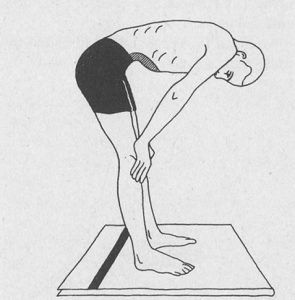Hypopressive breathing is a technique used to lift the pelvic organs and muscles, to reduce intraabdominal pressure and improving core muscle activity. This indirectly happens from the lift of the diaphragm and associated pressure decrease in the pelvic and abdominal cavities.
History
Hypopressive literally translates to “hypo” meaning low, and “pressive” meaning pressure.
Hypopressives’ are not new. Historically, in Yoga practice a Hypopressive manoeuvre called the Uddiyana Bhandha has been used for thousands of years for reported purposes such as visceral mobilization, respiratory muscle strengthening, and diaphragmatic mobility. Research findings demonstrate the Uddiyana bandha increases transverse abdominus muscle activation and decreases pressure in the colon.
In the late 1970’s the Hypopressive technique was adopted by bodybuilders, most famously Arnold Schwarzenegger, and renamed the “abdominal vacuum”. It was a technique used to visually reduce waist size while simultaneously highlighting thoracic muscles.
Modern day hypopressive exercises were developed in the 1980’s in Europe by Dr. Marcel Caufriez specifically as a postpartum recovery technique for women experiencing pelvic organ prolapse and incontinence.
The hypopressive apnea is the hallmark feature of hypopressive exercise, during which after full exhalation, breath is held, the glottis is closed and the intercostal muscles are used to create inspiratory movement of the ribcage while the rectus abdominus muscle remains relaxed. The apnea (temporary cessation of breathing) and false inhale combined with specific postures decreases pressure, causing an automatic suction or decongestion of the pelvic cavity and recruits the deep muscles of the core.
What Is objectively happening during the Apnea?
- Pelvic organs lift
- Improve Core Muscle Action
- Decrease pressure in the colon
Populations and conditions that could benefit from this technique
- Postpartum: a safe and non-invasive technique of bringing awareness to pelvic floor muscles. It’s extremely beneficial in closing the abdominal muscles and helps to lift the pelvic organs, assisting the uterus to shrink back down to its normal size and stay in its optimal position within the pelvis
- Healthy patients with pelvic organ prolapse. Findings show a reduction in the degree of prolapse, decreased feelings of pressure and discomfort, and improved regulation of bowels.
- Lower back pain patients. Reducing intraabdominal pressure on the spine, improving support around the spine
- Anxiety and depression. Mindfulness is a useful tool to help manage these conditions, bringing awareness to the breath and associated sensations can give the brain a break from its thoughts.
Considerations and contraindications
Due to the nature of apnea (or any breath holding manoeuvre such as swimming under water) being that of a complicated interplay between the lungs and the heart resulting in heart rate, blood pressure and cardiac output changes. These changes are physiologically normal and well tolerated in a healthy person. But intentionally altering blood pressure and cardiac output in an individual with hypertension or COPD is not wise. Those with cardiac and/or lung issues should not perform the apnea stage.




